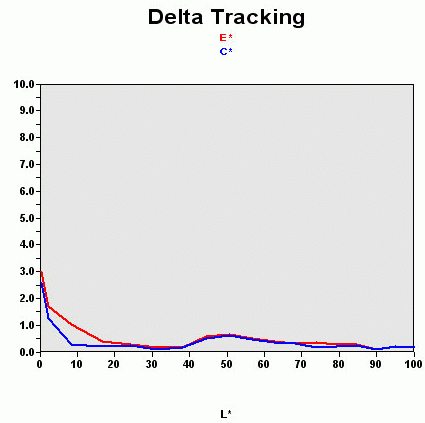All-Pro LCDs Part 2
14 Bits Of Accuracy
The L997 is astoundingly accurate.
With 14-bit color processing, calibrating the L997 was a cinch. 97% of the colors were perfect and nearly 99% were within the standard 6500K, gamma 2.2. But if you aren't satisfied with that, don't worry! The color temperature is adjustable from 4000K to 10,000K with an additional stop at 9300K. That should be enough to handle all your needs (in particular 5000K, 6500K, 7500K and 9300K). Added to that are six-channel color adjustment (red, green, blue, cyan, magenta and yellow) and adjustments for saturation, hue, etc. In short, if you're in the photography business, the L997 is the monitor for you.
| Header Cell - Column 0 | Black spot | White spot | Contrast |
|---|---|---|---|
| Eizo L997 | 0.4 | 230 | 575:1 |
Though the black level wasn't ideal, Eizo did achieve a very good 0.4 nits, with brightness that was a little high for standard uses. But we won't complain.
It came as no surprise that the contrast stability was exemplary:
This curve indicates the contrast value measured at a given brightness adjustment on the OSD. In theory, brightness and contrast are two independent parameters, and good contrast is a requirement regardless of the brightness adjustment. Unfortunately such is not the case in practice.
The brightness adjustment is shown on the X-axis, contrast on the Y-axis. Contrast is expressed here as a percentage of the maximum value measured using the ANSI test protocol.
The gamut test results were interesting too. In addition to being accurate, the colors were also rich. But frankly, differences in gamut are relatively insignificant between professional-level monitors, and more limitations are imposed by the backlighting technology than anything else.
Get Tom's Hardware's best news and in-depth reviews, straight to your inbox.


